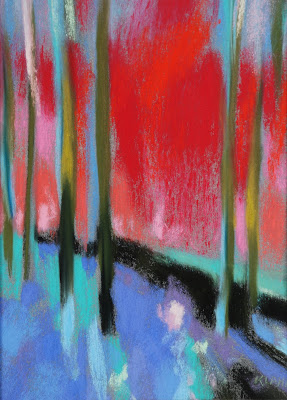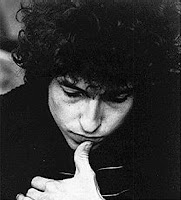What art related books did you read last year? Here is my book report for 2006.
I have already posted about my favorite, Abstract Expressionism, by Barbara Hess. Here is the U.K. resource, by the way, for this book.

The Collins Big Book of Art, Wilkins and Zaczek is a broad reaching and large reference volume that is more about image than text. It does highlight major moves forward in art history, and is, typical for our modern tastes, inclusive of non-western cultures. The level of realism that ancient man used was what struck me.

I also enjoyed a book about a late artist from my small, coastal hometown of Hoquiam, Washington. Elton Bennett, His Life and Art, Satterfield, is about the talented silkscreen artist who came out of logging and harbor work in this hard-scrabble frontier boom town.
You were not well advised to aspire to be an artist when there was man’s work to do in the woods. But Bennett really did see his sleepy and rain-soaked landscape for the visual treasure that it is. I also bought a couple of giclees from his estate this year.

Another TASCHEN book about my favorite artist of all time, Van Gogh, The Complete Works, by Walther and Metzger, has kept my interest. I’m going to do a whole post someday about the publisher TASCHEN who offer meaty art books for downright low prices.
Because my home lies at close to the same latitude as Southern France, and shares much of the same physical geography, I plan to emulate more of Van Gogh’s work. The rural landscape and light here, complete with wheat fields and crows, sun and vineyards match his environment quite well. Eat your heart out, fellow artists :-P

Try 500 Self Portraits, compiled by Julian Bell. The idea is another image-centric volume of works by famous artists through history.

Then, Degas, By Himself, compiled by Richard Kendall, had me reading the letters of the man himself. Degas, many are not aware, was the Impressionist whose most known works were not done in oil paint, but rather in soft pastel. Pastellists consider him their “patron saint” for this reason.
I’m seeing a real trend by art historians here to keep their perspective art-centric or artist-centric. That’s a happy departure from a lot of the goofy redactionist work that is written today in other fields of history.

Here’s a prize that I tripped over at the gun show/flea market in Spokane: the classic 1953 Carslon’s Guide to Landscape Painting, John F. Carlson. It is, to the best of my knowledge, out of print. First published in 1929, it is a wholesome primer on the subject.

Although McMichael’s Anthology of American Literature is not about art, you may deduce my particular interest in it by looking at it’s cover ;=) Clue: that's my own painting, Red Barn with Ramp.
I am still reading the next two short books.

Art’s Prospect, The Challenge of Tradition in an Age of Celebrity, by Roger Kimball, concerns art criticism and art critics themselves, within their historical contexts. It is a collection of essays by this editor of The New Criterion magazine

Art History, A Very Short Introduction, is by Dana Arnold, and studies the “naval” of art history as a discipline, rather than the actual history of art.
I started the year 2006 with a very big volume on art history, and closed it out with a very small one on the same subject. That does not sound very promising for me, does it?
Administrative note: The extremely annoying HTML writing that appears above and below these book images, that says: "if !support Empty Paras", etc., does not appear in my Firefox pages, but does appear on I.E. and MSN. I won't take the trouble to clean it up, since the whole thing looks very good on my computer with Firefox.






 The Four Seasons, Winter, 14” x 10”
The Four Seasons, Winter, 14” x 10”


























 Check out
Check out 




































